On our first day of touring with Haggis Adventures we explored the Scottish Highlands including stops at the visitor center of the Battle of Culloden Moor and the mysterious Clava Cairn.

Battlefield of Culloden Moor
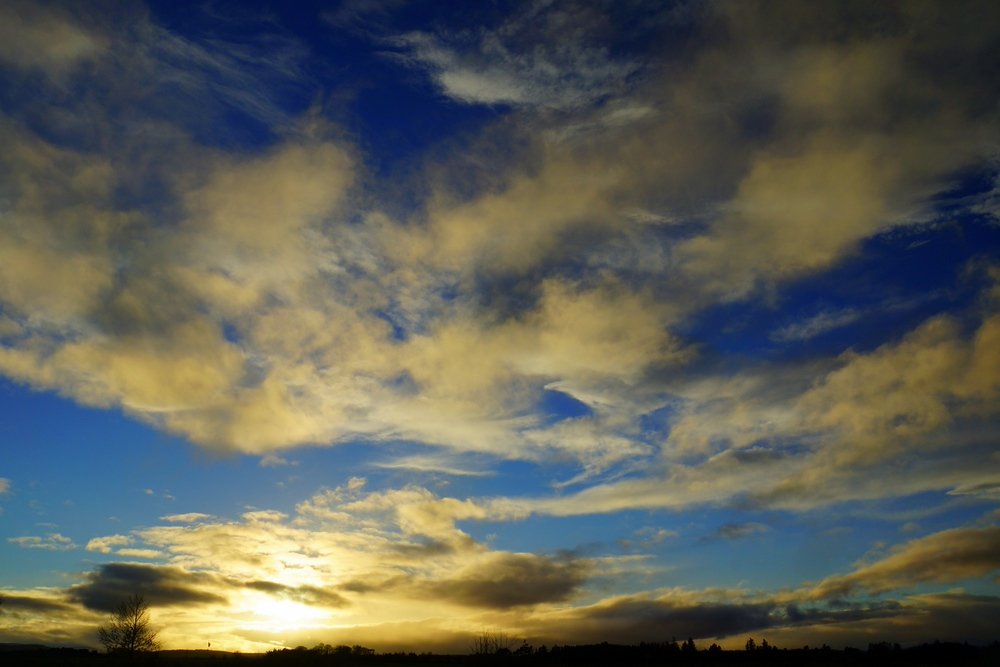
Standing on Culloden Moor I saw nothing but blue sky, white clouds and grassy fields dotted with sporadic trees. Upon first examination this seemed as quiet, remote and peaceful of a place you could possibly ever visit; however, a wisp of the wind revealed that Culloden Moor was the tragic battlefield grounds and final confrontation of the 1745 Jacobite Rising.
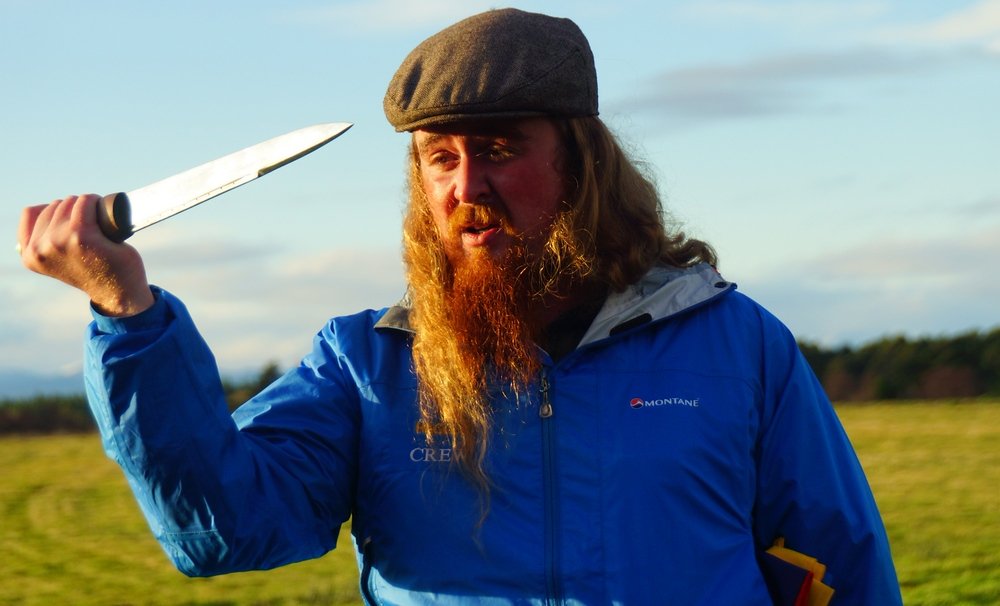
Dave, our gregarious guide from Haggis Adventures, (clad in a kilt, sporting an impressive ginger beard and wielding historical artifacts associated with the time period [various weapons and flags]) informed us of the significance of this now memorial site: “No jokes, no humor at all. This is a massive war grave where my ancestors and other people’s ancestors died needlessly. Just the utmost respect guys.”
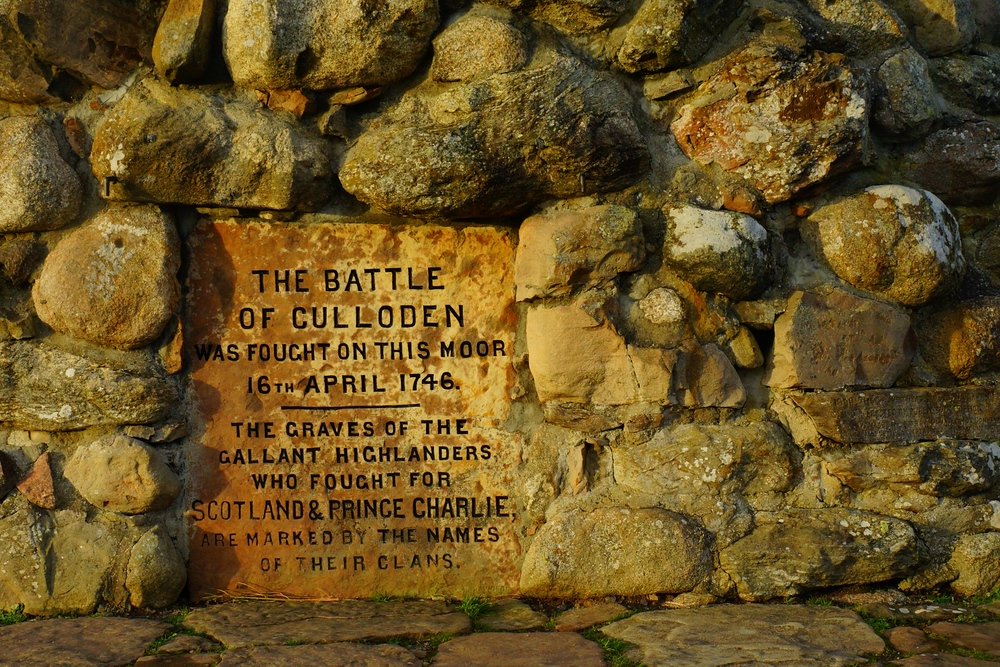
Not far from our initial starting point stood a 6.1 meter memorial cairn with the following inscribed:
The Battle Of Culloden
THE BATTLE
OF CULLODEN
WAS FOUGHT ON THIS MOOR
16TH APRIL 1746
THE GRAVES OF THE
GALLANT HIGHLANDERS
WHO FOUGHT FOR
SCOTLAND & PRINCE CHARLIE,
ARE MARKED BY THE NAMES
OF THEIR CLAN
Dave continued explaining the significance of Culloden to the Scots and especially the Jacobite highlanders: “People come now to sing songs, tell stories and to remember on the 16th of April. A blind piper plays. He plays songs on the bagpipes for 45 minutes, which is the length that the battle lasted for. It tugs on your heartstrings.”
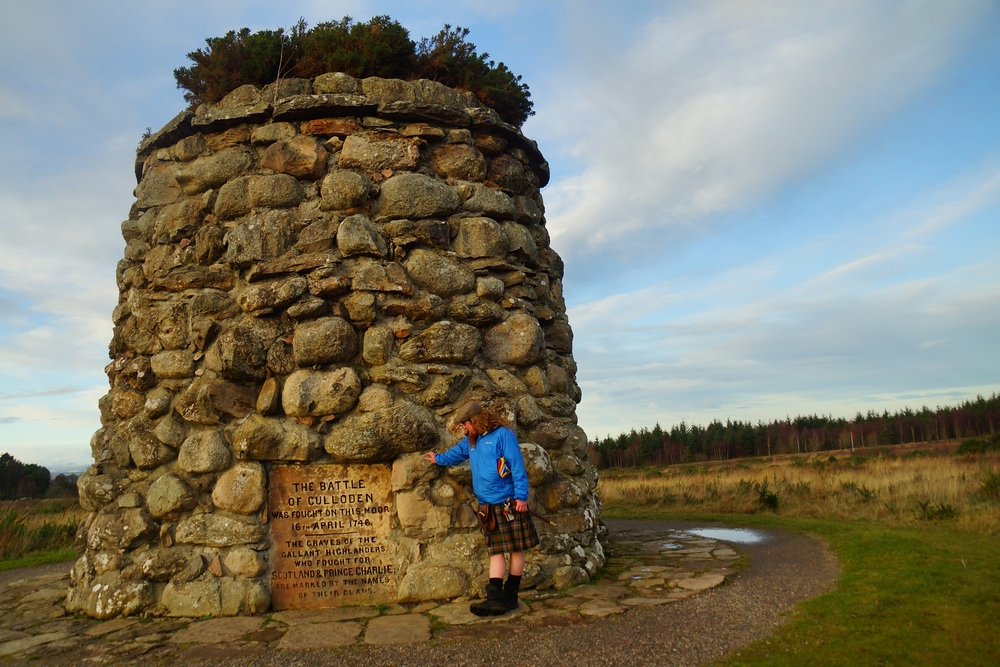
The Battle of Culloden, which took place on April 16, 1746 near Iverness in the Scottish Highlands, was the final confrontation of the 1945 Jacobite Rising. Jacobite forces under Bonnie Prince Charlie fought passionately against loyalist soldiers under the leadership of William Augustus – better know as the Duke of Cumberland. This bloody and ultimately quick conflict lasted less than an hour in which an estimated 1,500 to 2000 Jacobites were killed/wounded as opposed to significantly less casualties from the redcoats. The aftermath of the battle was a time of oppression for Jacobites who were brutally marginalized earning the Duke of Cumberland the title of ‘Butcher.’ Policing and civil penalties were implemented with the intention of weakening the Scottish clan system and Gaelic culture.
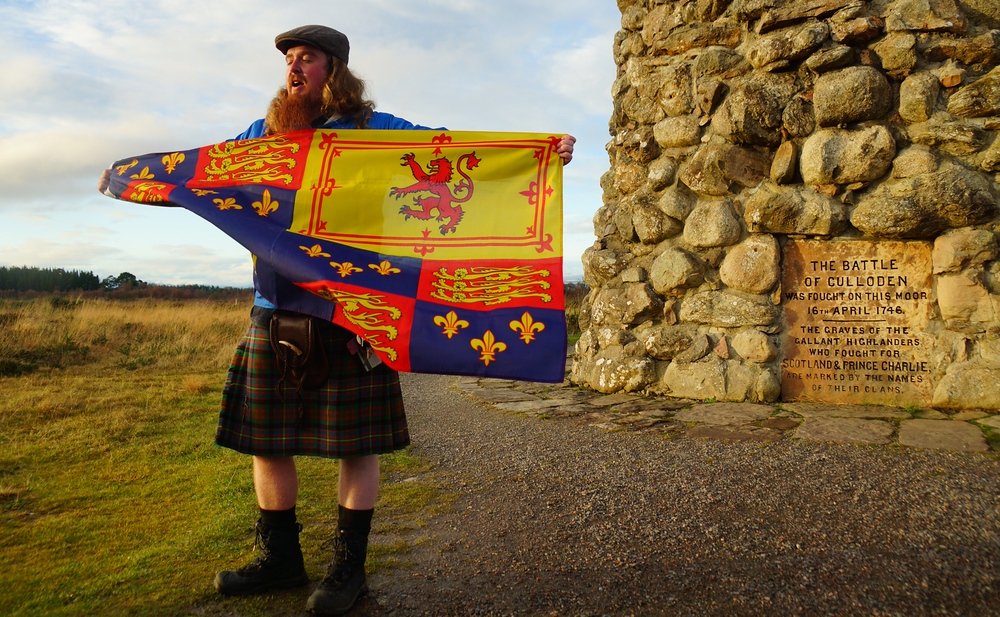
Most tragic is the grave post of the ‘Mixed Clans’ – members who were so brutally disfigured in the battle that their remains were unidentifiable. Their family name and clan ties forever wiped out from history.
Travel Video:
source: Nomadic Samuel and That Backpacker on Samuel and Audrey YouTube channel
However, the spirit, passion, courage and morale of the Jacobite Highland forces remains in tales told today: “Lord George Murray was a Jacobite General. He led a charge into the front-line of the British government army. Snapped his sword in two, lost his horse and came back out of the front line; he got another sword, got another horse and led a second charge in.”
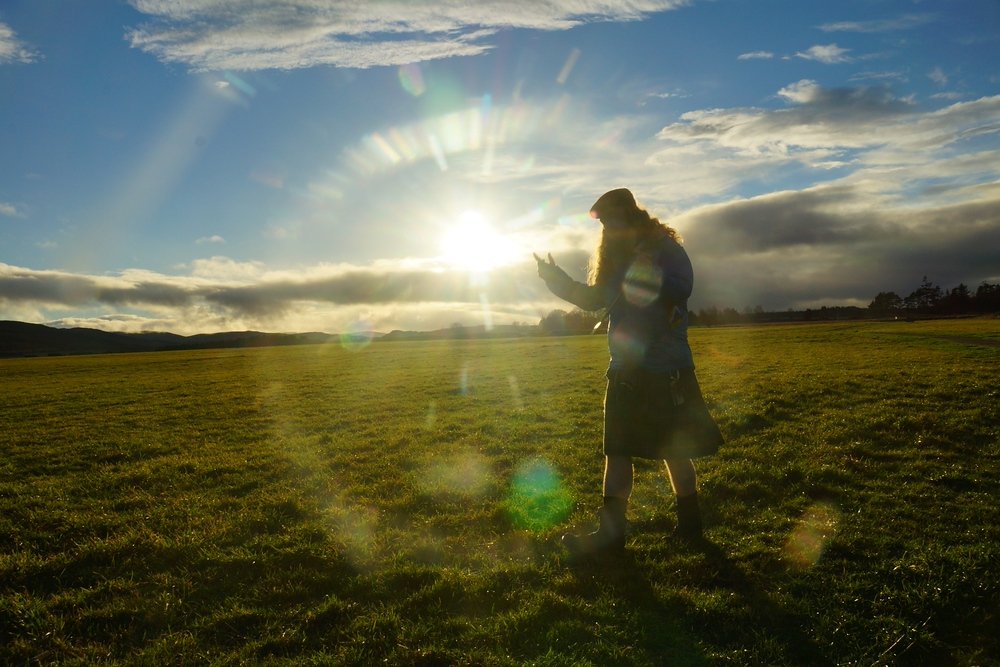
This battlefield is protected by Historic Scotland where a visitor center has been functional since December, 2007. On the anniversary of the battle people come to pay their respects.
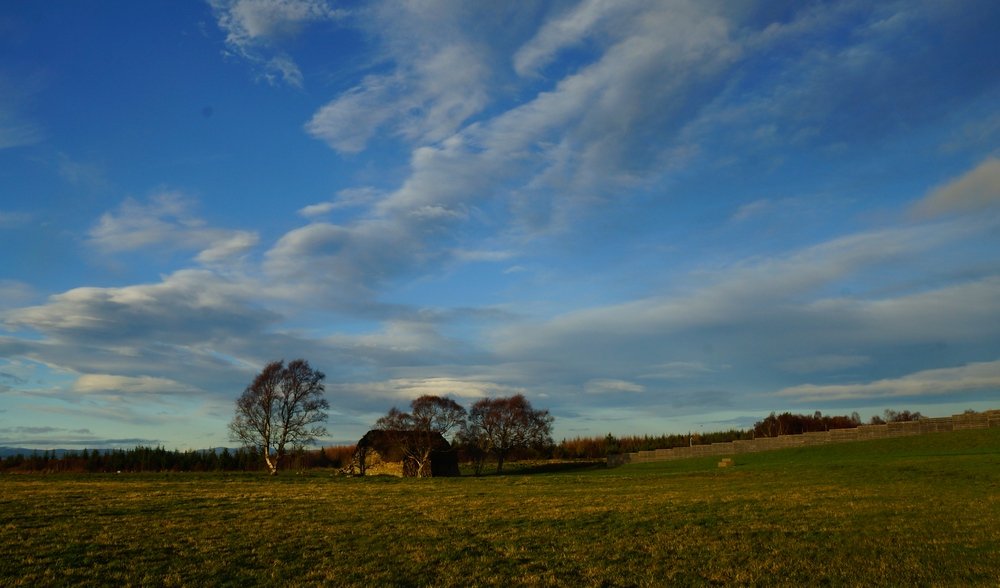
Dave, accurately summed up the realities of war and conflict: “One thing that is guaranteed in war is death. Death and destruction.”
As someone with a certain amount of Scottish ancestry, I couldn’t help but wonder how many of my relatives may have lost their lives on this very moor. Standing quietly on the field alone, I stopped to pay my respect with a minute of silence.
Battlefield of Culloden Moor: The Last Stand of the Jacobites
Culloden Moor, situated near Inverness in the Scottish Highlands, is a place of profound historical significance. At first glance, its sweeping fields and tranquil atmosphere might not hint at the turbulent events that unfolded here. Yet, on April 16, 1746, this quiet moor became the site of one of the most pivotal and tragic battles in British history—the Battle of Culloden.
A Turning Point in Scottish History
The Battle of Culloden marked the end of the Jacobite Rising of 1745–46, a movement aiming to restore the House of Stuart to the British throne. Led by Prince Charles Edward Stuart, affectionately known as Bonnie Prince Charlie, the Jacobites initially saw a series of successes. However, by the spring of 1746, their momentum had waned. Facing them were the government forces commanded by Prince William Augustus, Duke of Cumberland, son of King George II.
The Jacobite army, numbering around 5,000 weary and ill-equipped men, stood against a well-rested and better-armed government force of approximately 9,000 soldiers. The stage was set for a decisive confrontation.
The Battle Unfolds
On that fateful morning, under a gray and somber sky, the two armies faced each other across the moor. The terrain was marshy and uneven—far from ideal for the Highlanders’ traditional charge.
The battle began with an exchange of artillery fire. The government’s superior cannons unleashed a devastating barrage, wreaking havoc on the Jacobite lines. Desperate to break the enemy’s momentum, the Jacobite commanders ordered a full-scale charge. The Highlanders, renowned for their fierce and fearless charges, surged forward.
But the boggy ground hindered their advance. Struggling through mud and under relentless cannon and musket fire, many fell before reaching the government lines. Those who made it faced disciplined troops armed with bayonets. The clash was brutal but brief. Within an hour, the Jacobite forces were decimated.
Estimates suggest that about 1,500 Jacobite soldiers were killed or wounded, while government casualties were significantly fewer—around 300 men. The defeat was catastrophic for the Jacobite cause.
The Aftermath and Its Consequences
The repercussions of the Battle of Culloden were swift and severe. The Duke of Cumberland earned the grim nickname “Butcher Cumberland” due to his ruthless actions following the battle.
- Immediate Reprisals: Wounded Jacobite soldiers were executed where they lay. Survivors were hunted down, and those suspected of supporting the Jacobites faced harsh punishments.
- Suppression of Highland Culture: The British government implemented laws to dismantle the clan system and suppress Gaelic culture. The Dress Act of 1746 banned the wearing of traditional Highland attire, including kilts and tartans. The Disarming Act prohibited Highlanders from bearing arms.
- Cultural Upheaval: These measures led to significant cultural loss and social upheaval in the Highlands. Traditional ways of life were disrupted, and many families were displaced.
The aftermath of Culloden marked the beginning of the end for the traditional Highland clan system. The ensuing years saw the Highland Clearances, during which many were forced from their lands, leading to mass emigration.
The Culloden Visitor Centre
Managed by the National Trust for Scotland, the Culloden Visitor Centre offers an immersive experience for visitors.
- Interactive Exhibits: The center features artifacts recovered from the battlefield, including weapons, clothing, and personal items. Interactive displays and multimedia presentations provide detailed insights into the events leading up to, during, and following the battle.
- Battlefield Tours: Guided tours allow visitors to walk the grounds, learning about the strategies employed and hearing personal stories of those who fought.
- Immersive Theatre: A 360-degree battle immersion theater recreates the intensity of the battle, helping visitors understand the chaos and magnitude of the conflict.
The center also provides resources for those interested in tracing ancestral connections to the clans involved in the battle.
Visiting Culloden Today
Culloden Moor is not just a historical site; it’s a place of remembrance and contemplation.
Tips for Visitors:
- Respect the Site: Remember that this is a war grave. Maintain a respectful demeanor while exploring the battlefield.
- Prepare for the Weather: The moor is exposed to the elements. Wear appropriate clothing and sturdy footwear, as conditions can be windy and wet.
- Allow Ample Time: To fully experience both the visitor center and the battlefield, plan to spend several hours.
- Photography: Photography is permitted, but be mindful of other visitors and the solemn nature of the site.
The Enduring Legacy
The Battle of Culloden remains a defining moment in Scottish history—a symbol of the end of the Jacobite cause and a catalyst for profound cultural change in the Highlands. Yet, despite the tragedy, Scottish culture and identity have endured and even flourished.
- Cultural Revival: There has been a resurgence of interest in Gaelic language, traditional music, and Highland customs. Festivals, such as the Highland Games, celebrate these traditions.
- Global Connections: Many descendants of Scottish emigrants around the world explore their heritage, fostering a global appreciation for Scottish history and culture.
- Educational Importance: Culloden serves as a powerful educational resource, teaching lessons about conflict, cultural suppression, and the resilience of a people.
Practical Information:
- Website: National Trust for Scotland – Culloden
- Address: Culloden Moor, Inverness IV2 5EU, Scotland
- Contact: +44 (0)1463 796090
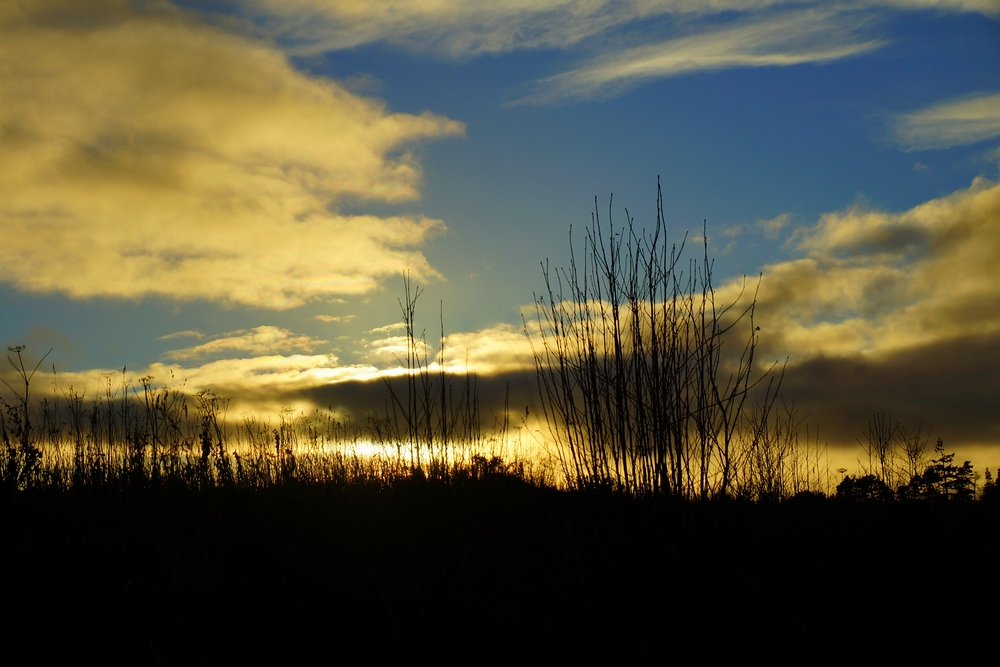
Balnuaran of Clava (Clava Cairns)
Nestled in the tranquil countryside near Inverness, Scotland, the Clava Cairns—also known as Balnuaran of Clava—stand as a silent testament to the ingenuity and spirituality of Scotland’s ancient inhabitants. This prehistoric burial site, dating back to the Bronze Age approximately 4,000 years ago, captivates visitors with its enigmatic standing stones and intricate passage graves. Recognized as one of the most significant prehistoric sites in the Scottish Highlands, Clava Cairns offers a window into a world long past, inviting exploration and contemplation.
A Journey Through Time: The Significance of Clava Cairns
The Clava Cairns are a group of exceptionally well-preserved Bronze Age burial mounds and stone circles. Constructed by early settlers in the region, these cairns reflect sophisticated engineering skills and a deep understanding of astronomy and spirituality.
The Three Main Cairns:
- Balnuaran of Clava (Central Ring Cairn)
- Clava North Cairn (North-East Passage Grave)
- Milton of Clava (South-West Passage Grave)
Each cairn has its unique features and mysteries, contributing to the overall significance of the site.
1. Balnuaran of Clava (Central Ring Cairn)
The Balnuaran of Clava, also known as the Clava Ring Cairn, is the most prominent and arguably the most impressive structure at the site. This cairn consists of a central circular stone mound surrounded by a ring of standing stones.
Architectural Features:
- Ring of Standing Stones: The outer circle comprises large stones strategically placed around the central cairn. These stones vary in height, with the tallest positioned to the southwest.
- Central Cairn: The cairn itself is a rubble mound that may have been used for ceremonial purposes, possibly without a roof.
- Solar Alignment: The stones are aligned to capture the light of the setting sun during the winter solstice, illuminating the site in a way that suggests ritualistic significance.
Cultural and Spiritual Significance:
The precise alignment with astronomical events indicates that the builders had advanced knowledge of celestial movements. The winter solstice alignment may symbolize themes of death and rebirth, common in many ancient cultures.
2. Clava North Cairn (North-East Passage Grave)
Located a short distance from the central cairn, the Clava North Cairn is similar in design but smaller in scale. This cairn features a passage grave, allowing access to the central chamber.
Architectural Features:
- Passage Entrance: A narrow corridor leads into the heart of the cairn, constructed with carefully placed stones.
- Burial Chamber: The central chamber may have housed the remains of notable individuals or been used for ritualistic purposes.
- Standing Stones: Like the central cairn, it is encircled by standing stones, though fewer in number.
Astronomical Alignment:
The entrance passage aligns with the southwest, directly facing the setting sun during the winter solstice. This alignment reinforces the site’s connection to solar events and suggests a unified design philosophy among the cairns.
3. Milton of Clava (South-West Passage Grave)
The Milton of Clava, though the smallest and most weathered of the three cairns, adds depth to the site’s historical narrative.
Architectural Features:
- Partially Ruined Structure: Time has taken its toll, and parts of the cairn have collapsed or been removed, but the foundational elements remain visible.
- Passage Grave Design: Similar to the Clava North Cairn, it includes a passage leading to what would have been a central chamber.
- Remaining Standing Stones: Some of the surrounding stones are still in place, hinting at its original grandeur.
Historical Importance:
Despite its condition, the Milton of Clava offers valuable insights into the construction techniques and cultural practices of the Bronze Age inhabitants. It completes the triad of cairns, each contributing to the site’s overall harmony and purpose.
The Mysteries of Clava Cairns: Theories and Interpretations
The Clava Cairns have long intrigued archaeologists, historians, and visitors alike. Several theories attempt to unravel the site’s purpose and the intentions of its builders.
1. Ceremonial and Burial Purposes
- Burial Site: Evidence suggests that the cairns were used as burial chambers, housing the remains of important community members.
- Ceremonial Functions: The elaborate construction and alignment indicate that the site may have hosted rituals or ceremonies, possibly related to solar events.
2. Astronomical Observations
- Solar Alignments: The precise positioning of the cairns and standing stones with the winter solstice sunset points to advanced astronomical knowledge.
- Agricultural Calendar: Alignments may have helped mark important dates for agricultural activities, guiding planting and harvesting cycles.
3. Spiritual and Religious Significance
- Connection to the Afterlife: The alignment with the setting sun, often associated with endings or transitions, could symbolize the journey to the afterlife.
- Ancestral Worship: The cairns may have served as focal points for honoring ancestors and maintaining a connection between the living and the dead.
Architectural Mastery: Construction Techniques
The construction of the Clava Cairns showcases remarkable engineering skills, especially considering the tools and technology available during the Bronze Age.
Building Materials:
- Local Stones: Builders used stones sourced from nearby rivers and quarries, selecting specific types for different parts of the structures.
- Graded Stone Circles: The standing stones are carefully graded in height, creating a harmonious aesthetic and potentially serving symbolic purposes.
Construction Methods:
- Dry Stone Technique: Stones were meticulously fitted together without the use of mortar, demonstrating precision and craftsmanship.
- Passage Alignment: The orientation of passages required careful planning and understanding of astronomical events.
Visiting Clava Cairns Today: A Timeless Experience
The Clava Cairns offer a unique opportunity to connect with Scotland’s ancient past. Visitors can explore the site freely, immersing themselves in the tranquil atmosphere and pondering the mysteries that remain unsolved.
What to Expect:
- Serene Environment: The site is surrounded by lush greenery and offers a peaceful setting away from the bustle of modern life.
- Educational Signage: Informative panels provide historical context, archaeological findings, and explanations of the cairns’ features.
- Accessibility: Pathways allow for easy exploration, though the ground can be uneven in places.
Tips for Visitors:
- Respect the Site: As a protected historical monument, it’s important to treat the cairns with care. Climbing on the stones or disturbing the structures is discouraged.
- Photography: The site offers excellent photographic opportunities, especially during sunrise or sunset when the lighting enhances the stones’ textures.
- Weather Preparedness: The Scottish weather can be unpredictable. Wearing comfortable shoes and bringing waterproof clothing is advisable.
The Cultural Impact: Clava Cairns in Modern Media and Folklore
The Clava Cairns continue to influence culture and capture the imagination:
1. Inspiration for Literature and Television
- Outlander Series: The site is said to have inspired the fictional Craigh na Dun in Diana Gabaldon’s “Outlander” novels and subsequent television adaptation. Fans often visit to experience the mystical atmosphere depicted in the story.
2. Local Legends and Folklore
- Mystical Energies: Legends speak of the cairns possessing supernatural powers or serving as gateways to other realms.
- Fairy Lore: Some tales suggest that the site is inhabited by fairies or spirits, adding an element of enchantment.
The Enduring Mystery:
Despite extensive research, many questions about the cairns remain unanswered:
- Who exactly were the people who built them?
- What beliefs drove them to create such structures?
- How did they acquire the knowledge and skills required?
These mysteries add to the site’s allure, inviting visitors to form their interpretations and connections.
Cultural Preservation:
Efforts to preserve and study the Clava Cairns ensure that future generations can continue to learn from and appreciate this remarkable heritage site. The cairns are protected under Scottish law, with organizations working to maintain their integrity and promote responsible tourism.
Practical Information for Visitors
- Location: Approximately 6 miles east of Inverness, off the B9091 road.
- Admission: Free entry.
- Opening Hours: Open year-round during daylight hours.
- Facilities: Limited facilities on-site; restrooms and dining options are available in nearby Inverness.
- Accessibility: Paths are unpaved and may be uneven; suitable footwear is recommended.
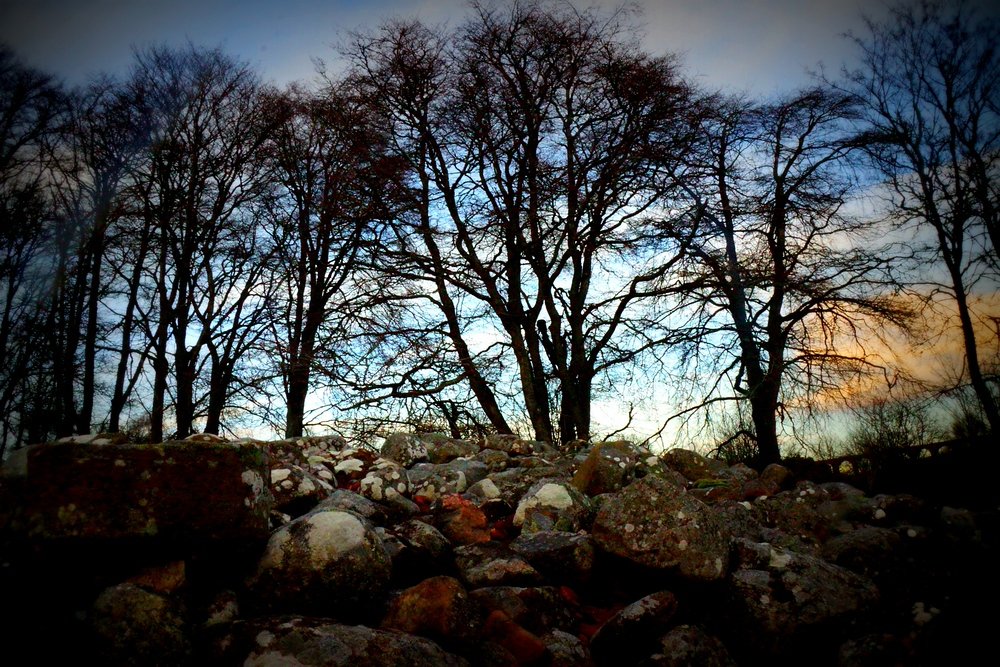
Not far from Culloden was our next stop – Clava Cairns. In an area with more forest and shade stood a mysterious Bronze age circular chamber tomb cairn.
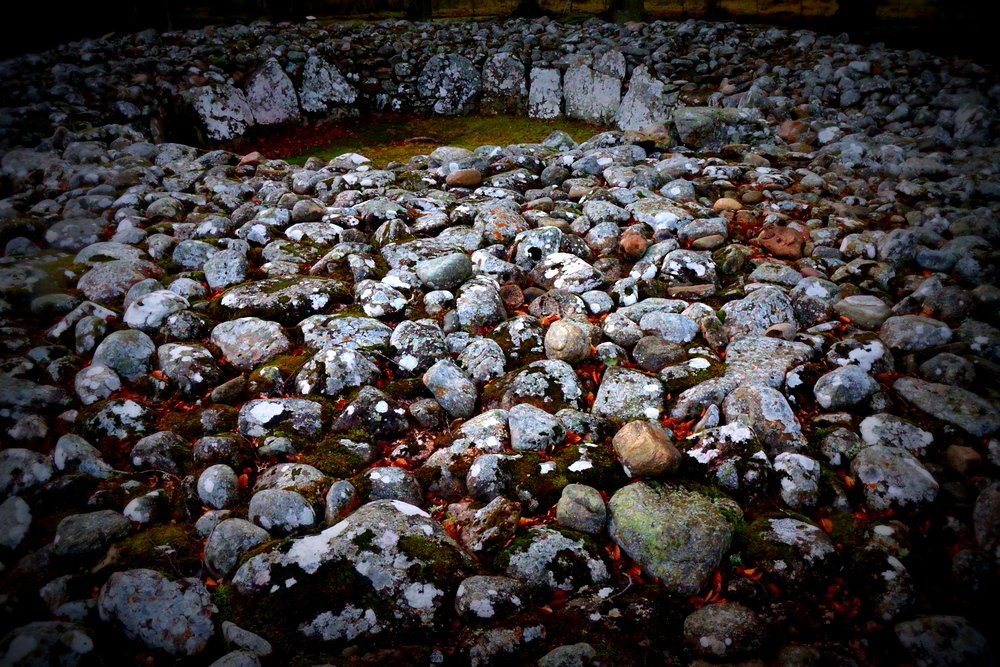
The significance of the cairns is one that is still highly debated by academics today: “Every winter solstice people with professor suits on and they all argue with each other basically. These chambers are older than the pyramids. Built by teenagers because the lifespan at the time would have been around 30.”
As we huddled down as a group around the perimeter of the inner cairns circle, Dave continued: “The sun would set in alignment with fire and smoke. Very very spiritual.”
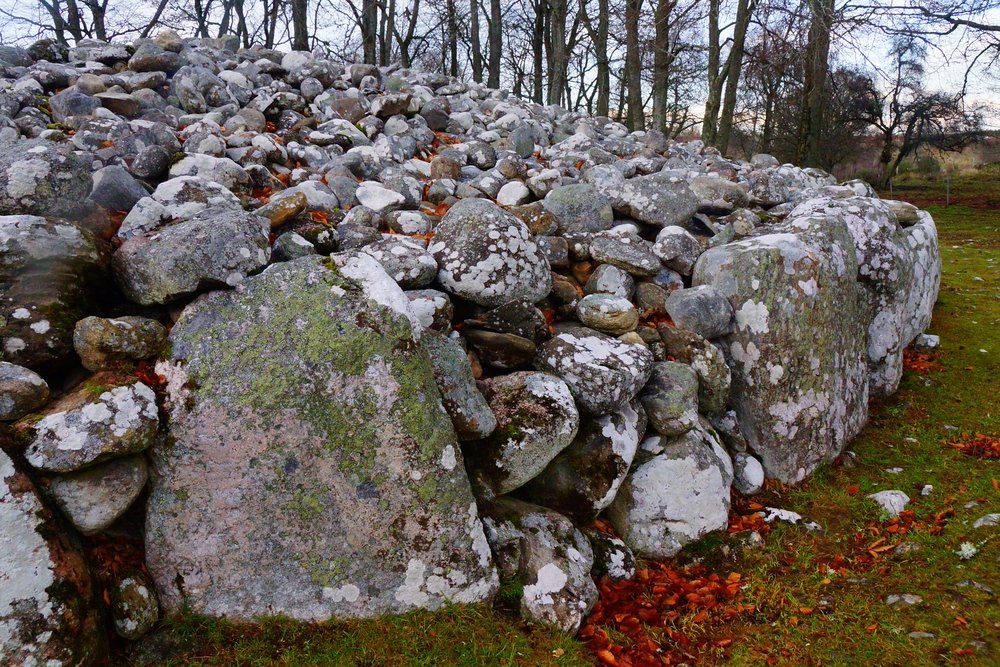
Those who have taken stones from the cairns have documented bad things happening to them prompting the stones to be returned, which Dave jokingly warned us about: “Don’t go on facebook (and say) Dave my arm is falling off!”
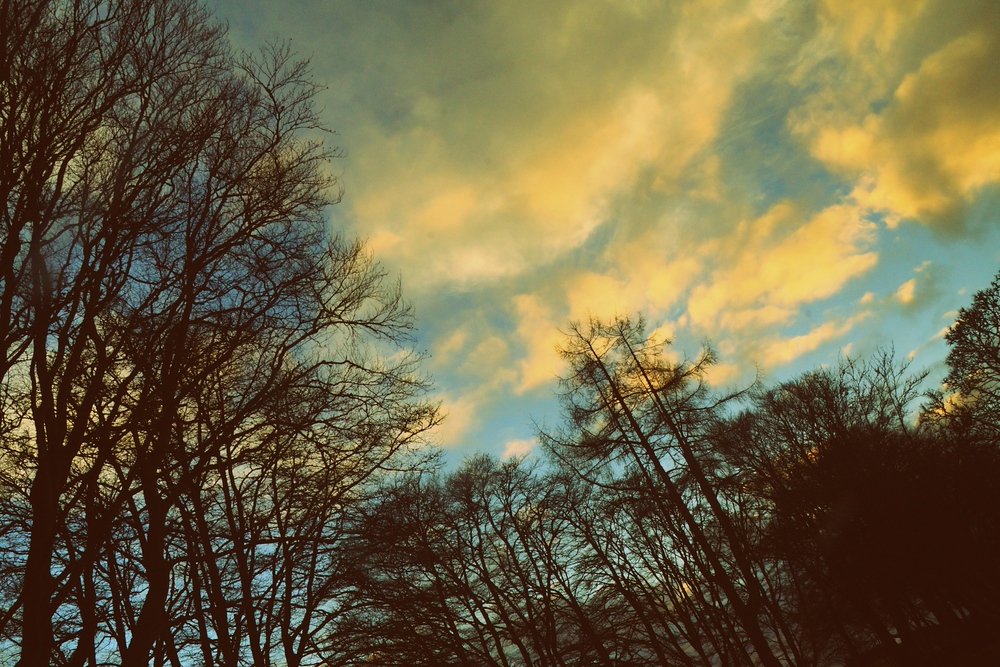
Overall, our first day visiting the highlands was an eye opening experience not only because of the stunning Highlands scenery but moreover because of the historical significance of the areas we visited.
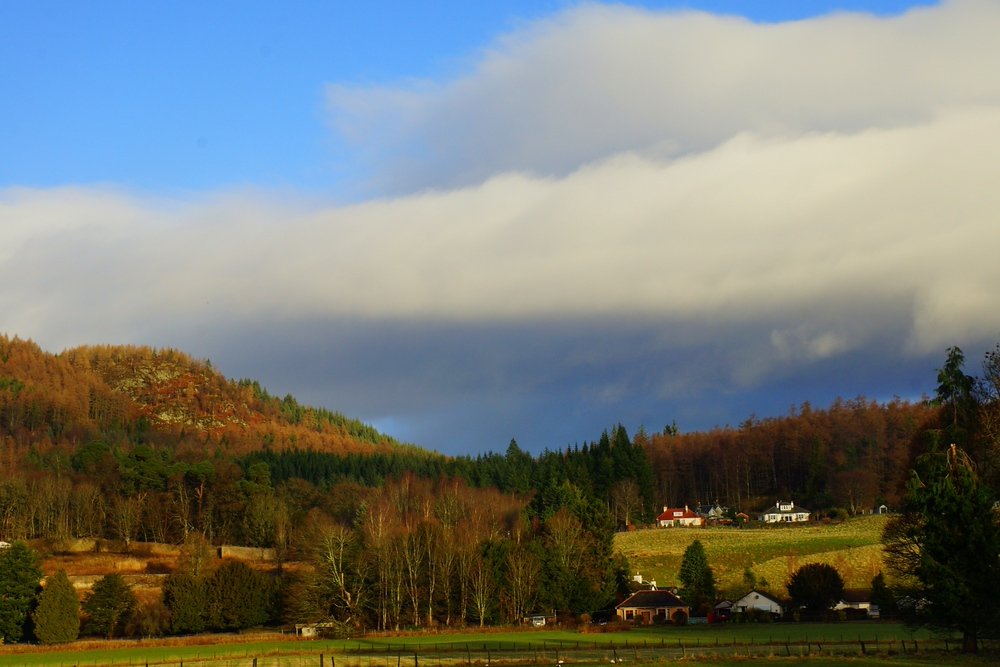
Turning Culloden & Clava Cairns Into an Easy Highlands Trip
Culloden and Clava Cairns make an incredible combo: one site where history punches you in the gut, and another where time just feels… elastic.
The nice thing is that they’re close enough together that you can visit both in a single, very manageable day from Inverness or as part of a longer Highlands road trip.
Here’s how to turn those impressions from the battlefield and the Bronze Age stones into a trip you can actually plan and enjoy.
How Much Time You Really Need
You don’t need to race around. With a bit of structure you can see both sites at a relaxed pace.
Time Breakdown
- Culloden Visitor Centre + Battlefield:
2–3 hours if you do it justice - Clava Cairns:
45–90 minutes, depending on how long you like to wander and take photos - Travel from Inverness (return):
Roughly 30–45 minutes each way by car, longer by bus or tour
If you’re based in Inverness, this works perfectly as:
- A half-day trip if you’re fast-paced
- A gentle full day if you add a castle, a distillery, or a Loch Ness stop
Getting There: Car, Bus, or Tour?
You’ve got a few good options for reaching Culloden and Clava Cairns. Each one changes the flavour of the day a little.
Quick Comparison
| How to Visit | Travel Time from Inverness | Flexibility | Vibe | Best For |
|---|---|---|---|---|
| Self-drive (rental car) | 20–25 min to Culloden | ⭐⭐⭐⭐⭐ | Stop wherever you like | Independent travellers, photographers |
| Local bus + walking / short taxi | 30–40 min | ⭐⭐ | Budget but slower | Backpackers, solo travellers |
| Guided day tour (Culloden + extras) | Varies (full day) | ⭐⭐ | Stories, no planning | First-timers, history buffs |
| Multi-day Highlands tour (like I did) | Spread over 2–3 days | ⭐ | Social, big-picture overview | People who want a “no-stress” Highlands intro |
Self-Drive: Easiest Combo
If you’re comfortable driving on the left, renting a car gives you the most freedom:
- Park directly at Culloden Visitor Centre
- Then drive a short hop (around 10 minutes) to Clava Cairns
- Build in extra stops at viewpoints, villages, or a distillery on the way back
Bus + Walking / Taxi
From Inverness:
- Take a local bus towards Culloden/Culloden Battlefield and walk from the stop, or hop in a short taxi ride from the city centre
- Between Culloden and Clava, you can:
- Walk the quiet country lane (beautiful, but allow time and bring good shoes), or
- Use a pre-booked taxi for the short transfer if you’re tight on time
Good option if you’re on a budget and don’t feel like driving, but you’ll want to keep an eye on timetables.
Guided Tours
If the idea of not thinking about logistics appeals, a guided tour does the heavy lifting:
- Day tours often bundle Culloden, Clava Cairns, Loch Ness, and one or two small villages
- Multi-day tours (like the Haggis Adventures trip I did) weave Culloden into a larger Highlands circuit, with stories on the bus to connect all the dots
You trade freedom for context and storytelling, which works really well at places like Culloden where the history is complex and emotional.
On the Ground at Culloden: A Simple Route That Flows
Culloden hits harder when you let the experience build slowly instead of sprinting straight to the memorial cairn.
Here’s a flow that works well:
1. Start Indoors at the Visitor Centre
- Begin with the chronological exhibits: they walk you through the Jacobite rising, the politics, the personalities, and the lead-up to that final stand in 1746
- Watch the short films and listen to the audio snippets of letters, orders, and eyewitness accounts
- If there’s a 360° battle room or immersive theatre running while you’re there, it’s worth the time – it drops you into the chaos without romanticising it
This is where the battle shifts from a paragraph in a textbook to real people with names and families.
2. Step Out Onto the Battlefield
Once you’ve absorbed the context, head out onto the moor.
- Follow the marked paths across the field rather than cutting through the heather
- Look for the low stone walls and interpretive boards that show where each side stood
- Take a moment at the clan grave markers – the stones marked Fraser, MacGillivray, and others are particularly powerful
- Pause at the “Mixed Clans” marker, where those too badly disfigured to identify were buried
You don’t need to rush. Let the wind, the silence, and the flatness of the land do some of the talking.
3. Visit the Memorial Cairn and Cottage
- The tall memorial cairn is where many visitors naturally gather, but it’s worth walking there after you’ve seen the clan stones
- If the small cottage is open (Leanach Cottage), pop inside for a sense of 18th-century life and the scale of the battle around it
If you’ve got a guide like Dave with his flags and stories, you’ll get extra layers. If not, the visitor centre audio guide does a decent job of walking you through key points.
How to Visit Culloden Respectfully
Culloden is a war grave as much as it is a tourist site. It’s pretty easy to be respectful without feeling stiff or awkward.
A few simple guidelines:
- Keep voices low on the battlefield itself – save louder chats for the car park or café
- Avoid picnicking directly on the marked grave areas; there’s plenty of space along the edges
- Drones, loud music, and “fun” battlefield re-enactments in costume really don’t fit the tone
- If you’re travelling with kids, it’s a good chance for a gentle chat about why this place matters locally
You can still laugh, take photos, and enjoy your day – it just helps to remember whose ground you’re walking on.
Exploring Clava Cairns: Slower, Softer, Stranger
After the weight of Culloden, Clava Cairns feels like stepping sideways in time rather than backwards.
It’s quiet. No big visitor centre. No booming narration. Just trees. Stone. The soft rustle of the wind.
Getting Your Bearings
When you arrive, take a slow lap before you dive into details:
- You’ll see three main cairns, some with passageways, some ringed with standing stones
- The stones themselves are graded in height, often tallest on one side, shorter on the other
- If you visit near sunrise or sunset in winter, you really see how the light cuts along the alignments
Don’t stress about remembering which cairn is which. Just notice the patterns: where the passages face, how the outer circle frames the inner mound, how the trees play against the stones.
When to Visit for Atmosphere
Clava Cairns changes character with the light and the season.
Time of Day
- Early morning: Mist in the trees, dew on the stones, birdsong – very atmospheric and usually quiet
- Late afternoon / golden hour: Warm light on the stone textures and silhouettes of trees against the sky
- Midday: Better for detail shots of carvings and textures, but flatter light overall
Season
| Season | What It Feels Like at Clava Cairns | Downsides |
|---|---|---|
| Spring | Fresh greens, birds, soft light | Muddy paths after rain |
| Summer | Lush and bright, buzzing with life | Can be busier, midges some days |
| Autumn | Golden leaves, low sun, rich colours | Chillier mornings and evenings |
| Winter | Bare trees, stark light, solstice alignments more obvious | Cold, shorter days, possible ice |
If you’re sensitive to crowds, aim for early or late in the day outside peak summer.
Outlander Fans and Everyone Else
Let’s address the elephant in the stone circle.
- If you’re an Outlander fan, Clava Cairns will feel eerily familiar, even though the TV version uses a fictional stone circle
- Treat the site as inspiration, not a film set: it’s older, quieter, and less polished than TV makes it look – in the best possible way
Even if you’ve never heard of Outlander, the cairns stand on their own:
- The alignments with the solstice
- The engineering skill wrapped in mystery
- The feeling that generations of people have stood here wondering the same things you are
No time travel required.
Building a Bigger Day Around Culloden and Clava
If you’ve got a full day, it’s easy to turn Culloden + Clava Cairns into a well-rounded Highlands sampler.
Sample One-Day Itinerary from Inverness
Morning
- Drive or take the bus from Inverness to Culloden Visitor Centre
- Spend 2–3 hours exploring the exhibits and walking the battlefield
- Grab a light early lunch or coffee at the centre café, or bring a picnic for later
Early Afternoon
- Head over to Clava Cairns
- Wander slowly among the stones, take photos, sit under a tree and just listen for a bit
- Allow at least an hour so it doesn’t feel rushed
Late Afternoon / Early Evening Options
Depending on the time of year and your energy:
- Swing by Inverness for a walk along the river and a pub dinner
- Detour to see Fort George from the outside or inside if time allows
- Drive a short stretch of Loch Ness for a quick viewpoint stop on the way back
You finish the day with both history and landscape in your head, which is what the Highlands do best.
Two-Day Mini-Highlands Plan (If You Can Stretch It)
If you’ve got a second day to play with, you can deepen things nicely.
Day 1: Culloden, Clava, Inverness
- Follow the one-day plan above
- Spend the night in Inverness: river walk, dinner at a cosy pub, maybe live music
Day 2: More Highlands, Less Rush
Pick one of these:
- Glen Affric: Forested glen, lochs, and easy-to-moderate walking paths – ideal if you love landscapes
- Black Isle: Coastal villages, beaches, and a slower pace north of Inverness
- Loch Ness & Urquhart Castle: More touristy, but iconic – especially good if it’s your first time in Scotland
Culloden and Clava anchor the storytelling part of your trip; day two fills in the wild scenery part.
What to Wear and Pack for a Culloden & Clava Day
The Highlands don’t care what the forecast app says. They’ll do their own thing.
Clothing
- Base layer: T-shirt or light long sleeve
- Mid layer: Fleece or jumper
- Outer layer: Waterproof, windproof jacket
- Bottoms: Comfortable trousers you don’t mind brushing against wet grass
- Footwear: Sturdy trainers or light hiking boots; the battlefield and cairns can be damp underfoot
In Your Daypack
- Small umbrella or rain cover (just in case)
- Water bottle and a couple of snacks
- Gloves and a hat outside of high summer – the wind bites on the open moor
- Power bank if you’re using your phone for photos, tickets, and maps
- A small notebook if you like jotting down family names or reflections as you go
You don’t need full expedition gear, but being prepared turns “ugh, I’m freezing” into “this moody weather is perfect”.
Where to Stay: Inverness vs the Countryside
Culloden and Clava Cairns are close enough to Inverness that you can stay pretty much wherever suits your style.
Choosing a Base
| Base Area | Pros | Cons | Best For |
|---|---|---|---|
| Inverness City | Lots of restaurants, pubs, shops, transport | More urban, can feel busy in summer | First visits, non-drivers |
| Countryside near Culloden | Quiet, closer to sites, more “Highlands” feel | Fewer dining options, need a car | Couples, repeat visitors, drivers |
| Loch Ness side | Iconic views, boat trips nearby | Longer drive to Culloden/Clava | Nessie hunters, scenery chasers |
Eating Around Culloden & Clava
- The Culloden Visitor Centre café is handy for soup, sandwiches, and hot drinks
- If you’re driving, consider:
- A late lunch or early dinner back in Inverness
- A packed picnic to enjoy at a viewpoint (just not on the graves at Culloden or on the stones at Clava)
Pubs and small cafés in Inverness are great spots to warm up and debrief after a heavy history day.
Rough Budget Expectations
Everyone’s spending style is different, but here’s how the day usually breaks down:
- Culloden Visitor Centre entry: Expect a moderate entry fee; battlefield access is usually included
- Clava Cairns: Typically free to wander, with no ticketed entrance
- Transport:
- Rental car + fuel for the day
- Or bus tickets / tour cost
- Food:
- Café lunch or picnic ingredients
- Optional drink or dinner in Inverness afterwards
If you’re planning several historic sites in Scotland, it can be worth checking whether a heritage membership or pass pays for itself over the course of your trip.
Common Mistakes to Avoid
A few easy pitfalls you can sidestep:
- Rushing Culloden
Doing the battlefield without the visitor centre (or vice versa) takes away half the story. Try to do both. - Treating the battlefield like a park
It’s beautiful, but it’s not just a green space. Picnic and joke a little farther away from the clan markers. - Turning Clava Cairns into a quick selfie stop
It’s tempting to jump out, snap, and leave. Give yourself at least half an hour of unhurried wandering. - Underestimating the weather
Blue sky in Inverness doesn’t always mean blue sky on the moor. Layers and waterproofs make life easier. - Overloading the day
It’s better to see Culloden and Clava properly, then add one small extra, than to cram five sites into one blur.
Tips For Visiting The Scottish Highlands
The Scottish Highlands are a truly remarkable destination that should be on every traveler’s bucket list. This stunning region is steeped in history, culture, and natural beauty, offering an abundance of experiences for visitors to enjoy. Whether you’re a seasoned traveler or a first-time visitor, here are some tips to help you make the most of your trip to the Scottish Highlands.
1. Plan Ahead: Preparation Is Key
Why Planning Matters
The Scottish Highlands are vast, and there’s so much to see and do. Planning your trip in advance ensures that you make the most of your time and don’t miss out on any must-see attractions.
Tips for Effective Planning
- Research Destinations: Identify the places that interest you the most. Are you fascinated by history, captivated by nature, or eager to immerse yourself in local culture?
- Book Accommodations Early: Especially during peak season, hotels, B&Bs, and hostels can fill up quickly. Booking in advance secures your spot and often gets you better rates.
- Schedule Tours and Activities: Popular tours, such as wildlife safaris or guided hikes, may have limited availability. Reserve your spot ahead of time.
Personal Insight
When I first visited the Highlands, I underestimated travel times between destinations. The winding roads and frequent photo stops meant it took longer than expected to get from place to place. Having a flexible yet well-thought-out plan made all the difference.
2. Rent a Car: Embrace the Freedom
The Benefits of Driving
While public transportation exists, it doesn’t always reach the more remote or off-the-beaten-path locations. Renting a car gives you the freedom to explore at your own pace and discover hidden gems.
Driving Tips
- Left-Side Driving: Remember, in Scotland, you’ll be driving on the left side of the road. Take some time to adjust, especially if you’re from a right-side driving country.
- Single-Track Roads: Many rural roads are single-lane with passing places. Drive cautiously and be prepared to yield.
- Navigation: GPS can be spotty in remote areas. Consider bringing a physical map as a backup.
Personal Insight
Some of my most memorable experiences came from spontaneous detours—like stumbling upon a secluded loch or an ancient stone circle not marked on any map. Having a car made these adventures possible.
3. Dress for the Weather: Be Prepared for Anything
The Unpredictable Climate
The Scottish Highlands are notorious for their rapidly changing weather. You might experience sunshine, rain, wind, and even snow all in one day.
Packing Essentials
- Layer Up: Wear layers that you can add or remove as the temperature changes.
- Waterproof Clothing: A good waterproof jacket and pants are essential. Don’t forget waterproof footwear.
- Accessories: Hats, gloves, and scarves can be lifesavers, even in summer.
Personal Insight
I set out on a hike under clear skies, only to be caught in a sudden downpour an hour later. Thanks to my waterproof gear, the unexpected rain didn’t dampen my spirits or my plans.
4. Explore the Great Outdoors: Nature at Its Best
Embrace the Landscape
The Highlands are home to some of the most breathtaking scenery in the world. From majestic mountains to serene lochs and rugged coastlines, the natural beauty is awe-inspiring.
Activities to Consider
- Hiking and Walking Trails: Trails range from leisurely strolls to challenging climbs like Ben Nevis, the UK’s highest peak.
- Wildlife Watching: Spot red deer, golden eagles, otters, and dolphins. Guided wildlife tours can enhance your experience.
- Water Activities: Kayaking, canoeing, or even wild swimming in the lochs for the adventurous.
Personal Insight
Hiking the Quiraing on the Isle of Skye was like stepping into another world. The surreal rock formations and panoramic views are etched in my memory forever.
5. Visit Historic Sites: A Journey Through Time
Rich Historical Heritage
The Highlands are steeped in history, from ancient ruins to battlefields that shaped Scotland’s destiny.
Must-Visit Sites
- Culloden Battlefield: Walk the grounds of the last pitched battle on British soil and visit the informative visitor center.
- Eilean Donan Castle: One of the most photographed castles, situated on a small island at the point where three great sea lochs meet.
- Clava Cairns: Explore these Bronze Age burial sites and feel the mystique of ancient Scotland.
Personal Insight
Standing amidst the stones at Clava Cairns as the sun set was a mystical experience. The silence and the history felt almost tangible.
6. Sample the Local Cuisine: A Gastronomic Adventure
Taste of Scotland
Scottish cuisine is hearty and flavorful, with a focus on fresh, local ingredients.
Dishes to Try
- Haggis, Neeps, and Tatties: A classic dish that might surprise you with how delicious it is.
- Cullen Skink: A comforting soup made from smoked haddock, potatoes, and onions.
- Cranachan: A delightful dessert made with raspberries, cream, oats, honey, and a splash of whisky.
Personal Insight
Initially hesitant, I tried haggis at a local pub, and it was fantastic! Paired with live folk music, it made for a memorable evening.
7. Attend a Traditional Highland Games: Feel the Spirit
Cultural Extravaganza
Highland games are a celebration of Scottish culture, featuring traditional sports, music, and dance.
What to Expect
- Athletic Events: Watch competitors in events like caber tossing, hammer throwing, and tug-of-war.
- Music and Dance: Enjoy bagpipe bands and Highland dancers in full regalia.
- Community Atmosphere: Experience the warmth and pride of local communities.
Personal Insight
Attending the Braemar Gathering was a highlight of my trip. The energy was infectious, and it gave me deeper insight into Scottish traditions.
8. Visit a Whisky Distillery: Discover the Water of Life
Whisky Tasting
Scotland is renowned for its whisky, and the Highlands are home to some of the finest distilleries.
Distillery Experiences
- Guided Tours: Learn about the whisky-making process from malting to maturation.
- Tasting Sessions: Sample different expressions and discover your favorite.
- Whisky Trails: Follow routes like the Malt Whisky Trail to visit multiple distilleries.
Personal Insight
Visiting the Glenfiddich Distillery was both educational and delightful. The craftsmanship and history behind each bottle added depth to each sip.
9. Take a Road Trip: The Journey Is the Destination
Scenic Drives
The Highlands offer some of the most picturesque driving routes.
Routes to Consider
- North Coast 500: Often called Scotland’s Route 66, this 516-mile loop showcases the best of the Highlands.
- Loch Ness Circuit: Circle the famous loch and perhaps catch a glimpse of Nessie.
- Ardnamurchan Peninsula: Venture to the westernmost point of mainland Britain.
Personal Insight
Driving along the North Coast 500, I was constantly pulling over to capture the stunning vistas. Each turn brought a new breathtaking scene.
10. Embrace the Culture: Immerse Yourself Fully
Cultural Immersion
The Highlands have a rich and vibrant culture, deeply rooted in tradition.
Ways to Engage
- Attend a Ceilidh: A traditional Scottish social gathering with music and dancing.
- Live Music in Pubs: Enjoy folk music sessions, often featuring local musicians.
- Learn Gaelic Phrases: Locals appreciate the effort, and it’s a fun way to connect.
Personal Insight
Joining a ceilidh in a small village hall was an unforgettable experience. Despite my two left feet, the locals welcomed me into the dances with open arms.
Essential Questions About Visiting Culloden & Clava Cairns: Practical Answers & Honest Tips
How long do I really need to see both Culloden Battlefield and Clava Cairns in one day?
Realistically, you want half a day at minimum. Culloden Visitor Centre plus a slow walk around the battlefield tends to take 2–3 hours if you actually read the exhibits and spend time at the clan markers, and Clava Cairns feels best when you give it at least 45–60 unrushed minutes. Add travel time from Inverness and a coffee or lunch stop and you are looking at a comfortable 4–6 hour outing. If you are really into history or photography, stretching it to a full day with extra viewpoints or a castle stop never feels wasted.
Can I visit Culloden and Clava Cairns from Inverness without renting a car?
Yes. You can absolutely do this without a car if you are happy to juggle a bit of public transport. Local buses run from central Inverness out towards Culloden Battlefield, and from the road it is a manageable walk to the visitor centre; from there you can either walk the quiet lane on to Clava Cairns or call a short taxi. A taxi or rideshare from Inverness to Culloden is usually a 10–20 minute ride depending on traffic, so pairing buses one way and a taxi the other can keep costs reasonable while still giving you flexibility.
Do I need to book Culloden Visitor Centre tickets in advance or can I just show up?
It depends. In the very busy summer months and around school holidays, pre-booking timed tickets for the visitor centre is a good idea so you are not waiting around for an entry slot, especially if you are trying to line it up with bus times or a tour. Outside of peak times you can usually just walk in and buy on the day without drama. Either way, the battlefield itself is open air, so the main thing to watch is opening hours for the visitor centre rather than stress about a ticket selling out.
Is Clava Cairns really free to visit, and what facilities are there on-site?
Yes. Clava Cairns is typically free to enter and there are no ticket booths or turnstiles, but that also means facilities are minimal. You will usually find a small parking area, basic information boards and paths threaded through the stones, but no café, visitor centre or toilets on-site, so plan on using facilities in Inverness or at Culloden before you wander over. The flip side is that it often feels wonderfully low-key and peaceful, especially if you catch it early or late in the day.
What is the best time of year and time of day to visit Culloden and Clava Cairns?
Personally, I like these sites best in the shoulder seasons and at the edges of the day. Late spring and early autumn tend to balance quieter crowds with fairly reliable daylight and decent chances of moody skies rather than constant rain, while summer brings longer days but also more tour buses. For atmosphere and photos, early morning or late afternoon are hard to beat: the light is softer, the battlefield feels more reflective and Clava Cairns can be almost eerie when the sun is low. In winter it can be raw and cold, but crisp days with blue skies or mist around the trees can be incredibly atmospheric if you are dressed for it.
Is Culloden Battlefield too intense or upsetting for children?
Sometimes. Culloden is powerful and emotional, and the visitor centre does not shy away from the human cost of the battle, so very young or sensitive kids may find parts of it unsettling. That said, a lot of families visit and treat it as a chance to talk about history, choices and consequences, and much of what you see is audio, maps and objects rather than graphic imagery. The battlefield itself is simply open moorland with markers and a cairn, so outside it feels more contemplative than frightening. If you are unsure, you can always start with the outdoor section and decide how much of the indoor exhibits feels appropriate on the day.
Are Culloden and Clava Cairns accessible if I have limited mobility or use a pushchair?
Mostly. Culloden Visitor Centre has paved paths, ramps and accessible facilities, and there are marked routes across parts of the battlefield that are relatively flat, though the ground can still be uneven and soggy in places. Clava Cairns is more rustic, with grass, roots and stones underfoot, and while the walk from the small parking area is short, it may be tricky for wheelchairs or anyone who struggles with uneven terrain. If mobility is a concern, I would prioritise time in and immediately around the visitor centre at Culloden, then treat Clava Cairns as a bonus stop if the weather and energy levels are on your side.
What should I wear and pack for a day visiting Culloden and Clava Cairns?
Layers. The Highlands are notorious for throwing you all four seasons in a single afternoon, and both sites are quite exposed to wind and showers. A basic formula that works well is comfortable trousers, sturdy trainers or light hiking shoes, a breathable base layer, a warm mid-layer and a waterproof, windproof jacket you can throw on quickly. Add a hat, gloves and a buff outside of high summer, plus a small daypack with water, snacks, a phone power bank and a dry bag or zip-lock for your camera or phone, and you will be able to enjoy the mood rather than worry about getting drenched.
Can I combine Culloden and Clava Cairns with Loch Ness or other Highlands sights in a single day?
Absolutely. If you start early from Inverness you can spend a solid block of time at Culloden, wander Clava Cairns, and still squeeze in a Loch Ness viewpoint, a quick visit to Fort George or a short scenic drive before dinner. The key is to avoid packing in too many far-flung stops; think two main sites plus one bonus rather than trying to tick off the entire Highlands in a single day. Remember that roads are slower than they look on the map and you will probably want extra time for unplanned photo stops.
Are guided tours worth it here, or is it better to explore Culloden and Clava Cairns on my own?
Both. A good guide or organised tour can make Culloden hit much harder by weaving together the big-picture politics with the small human stories, and it is particularly helpful if you find historic battles hard to visualise. On the other hand, the visitor centre is very well done and provides audio guides and clear displays, so independent travellers with a bit of pre-reading will still get a lot out of it. At Clava Cairns, there is no formal guiding on-site most of the time, so even on a tour you will usually have free time simply to wander and soak up the atmosphere. If your budget allows, a small-group tour that includes both sites plus one or two extras is a nice middle ground between structure and freedom.
Can I take photos or fly a drone at Culloden and Clava Cairns?
Photos, yes; drones, usually no. Photography for personal use is generally fine at both Culloden and Clava Cairns, and you will see plenty of people taking respectful shots of the landscape, stones and markers. Drone use is much more restricted because Culloden is a war grave and both sites sit in protected landscapes, so you should not assume you can just launch one, even if you own it. Always check current rules and local signage, and when in doubt, leave the drone packed away and focus on ground-level photos instead.
Are Culloden and Clava Cairns safe for solo travellers, including at dusk?
Yes. As day trips go, Culloden and Clava Cairns are very straightforward and feel safe for solo travellers, including those visiting in shoulder seasons. Paths are well used during the day, staff are present around the visitor centre, and the roads in and out are busy with locals and tour groups. The only time it can feel a little isolated is if you linger around Clava Cairns right at dusk in winter, so I prefer to plan my visit so I am back on the road or in Inverness before it is pitch black. The usual common-sense habits apply: let someone know your plans, stick to marked paths and keep an eye on bus or taxi times if you are not driving.
Is there anything for Outlander fans to see at Culloden and Clava Cairns?
Definitely. Culloden Battlefield features heavily in the Outlander story, and standing on the moor with the wind in your face makes those scenes feel a lot more real than they do on the page or screen. Clava Cairns is widely believed to have inspired the fictional stone circle of Craigh na Dun, and while it is not a one-to-one replica, wandering among the graded standing stones and passage graves makes it easy to see the connection. My only tip is to remember that these are real historic sites, not film sets, so enjoy the Outlander vibes but keep the tone respectful and give other visitors space.
Roughly how much should I budget for a day trip to Culloden and Clava Cairns from Inverness?
Think of it as a moderate spend rather than a budget buster. The biggest fixed cost is the Culloden Visitor Centre ticket, which for most adults sits in the mid-teens of pounds depending on memberships and concessions, while the battlefield outside and Clava Cairns themselves are free to wander. Transport from Inverness can range from a few pounds each way on a public bus to a higher but still manageable cost if you share a taxi or join a small-group tour. Add lunch or coffee at the visitor centre café or in Inverness plus a little extra for souvenirs, and most travellers will find that a thoughtful day around Culloden and Clava fits comfortably into a typical Highlands trip budget.
In Conclusion
So pack your bags, open your heart to adventure, and embrace all that the Scottish Highlands have to offer. As the Scots say, “Ceud mìle fàilte”—a hundred thousand welcomes await you.
#blogmanay is brought to you by Edinburgh’s Hogmanay and is supported by ETAG, EventScotland, Homeco

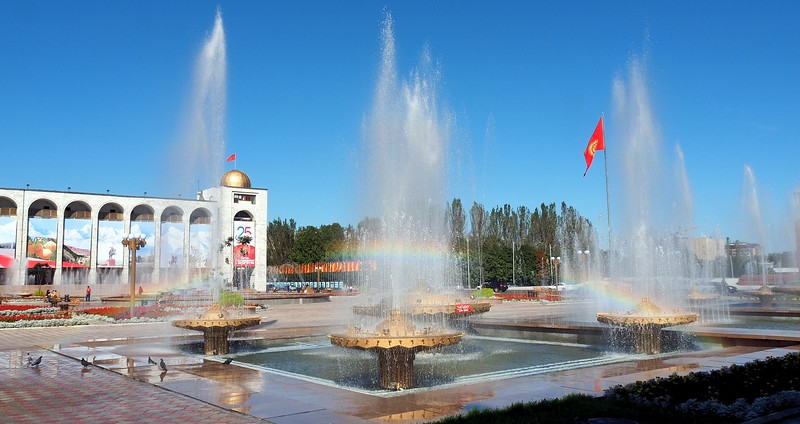


Your post beautifully captures the deep history and haunting beauty of Culloden and Clava Cairns. I love how you bring the Scottish Highlands to life with vivid descriptions and stunning photos. This is definitely inspiring me to explore these sites on my next trip to Scotland!
Great Post!
The place looks gorgeous and the pictures have come out brilliant too. Scotland stands apart!
Wondering if you tried ‘Hagus’ ? If so, your a braver belly than mine ..
Fascinating place, just so very old those structures.. I am glad I follow your blog for the stories and places you show make me want to travel so much more!
The pictures in this post are beautiful! The post is very informative. I really enjoyed reading it! Thank you for sharing. 🙂
Thanks Mary!
You’re welcome 🙂
Wow, the cairns look so interesting. Beautiful pictures. If, *when*, I go – I hope Dave is my guide too! 🙂
Thanks Tiffany,
If you go try to *request* Dave although I hear the other guides are good as well 😉
Looking at your photos of Culloden Moor, I can only imagine what that final battle must have been like. Wars today are so technological, but back in the day, it was all hand-to-hand, sword-to sword combat. What a terrifying scene it must have been. Looking at the beauty of the battlefield, you’d never guess that something so tragic took place there.
Dana,
That’s exactly how I felt. It’s such a beautiful place that I had to close my eyes to image what took place in the past.
Great post, really sums up the drama of the wilder parts of Scotland and one of the most intoxicatingly wild chapters of Scottish history. Writers and photographers like you are always welcome here. As we say here – Haste Ye Back!
Thanks Robin,
Looking forward to coming back in the summer. Great to meet up with you at #blogmanay and if you’ve got time would love to have a pint together again 🙂
Culloden is my very favorite place in Scotland. Our daughter, 9 at the time, did NOT want to leave – we closed the place down. It’s the spot where in all of gorgeous, scenic, historic Scotland, I most felt the past and present collide. So glad you shared your experiences and incredible photos.
Thank you!
It’s certainly a special place for many people. That’s great you were able to share the experience with your family 🙂
Beautiful post. I also have some Scottish ancestry so it hits close to home. I have yet to visit Scotland, but hope to remedy that in the near future! It looks like an absolutely stunning place.
Hope you get a chance to visit soon Heather! It’s a country that impressed me to the point where I’m making it a priority again to visit this summer.
I really enjoy reading your posts because it not only includes beauty of the place you are getting to know but also its history (and local culture). Thanks for the wonder post again!
Thanks Sunny!
I’ll be sharing more posts from Scotland soon 🙂
This article is very interesting and spectacular. The great pictures from your trip are amazing and they easily show how fantastic Scotland could be. The text under every photo and video underlines the conclusion of the photo and invites every reader to start a trip to Scotland with Haggis Adventures, too.
Thanks Nils,
Glad you enjoyed the article and I do highly recommend Haggis Adventures!
That is a very fitting and well toned article Samuel. It is very true that the Scots have a lot of pride and recognition for their history which is well decorated around Scotland. Maybe fitting that later this year they get to decide their fate in a more peaceful way with the referendum.
That Dave certainly comes across as quite a character. Ginger hair and beard and dressed appropriately he must have been a great tour guide.
Thanks!
It’ll be interesting to see which way they decide to go with the referendum. Dave was an awesome guide! I hope I get to meet up with him again for a pint in the summer.
Scotland is an amazing country to visit, it is one of our favourites, and my husband has always dreamed of living there, (if he can convince me to be so cold!). Thanks for sharing all of your lovely photos, they bought back such wonderful memories of the beautiful country side and epic history of the Scottish Highlands. Great to see “Haggis” are still doing such great tours 🙂
Thank you! I’d love to stay in Scotland for an extended period of time as well 🙂
Amazing photos. Scotland is definitely a place I would love to visit if given the opportunity. Surprisingly I haven’t heard very many travel bloggers talking about it before #Blogmanay, but it’s great to learn more!
That’s cool Casey. I guess that shows the campaign is working well. I didn’t realize how Scotland was until visiting there.
Haha I did Haggis Tours once, my guide was awesome….however yours just looks epic.
That’s cool Stephen!
I was able to meet one other guide (and he seemed great) but Dave is one of kind 😉
Wow! Beautiful! I hope to get there someday! thanks for the inspiration!
Thanks Cory! Hope you get to go soon 🙂
This clinches it…I’m going to Scotland for New Year 2015! So much fun!
Awesome Corinne!
You won’t be disappointed 🙂
Culloden is an amazing place. I am Scottish by birth but only recently visited it for the first time. There is a very special, eerie feeling when you stand there. Not the typical sort of tourist attraction but unforgettable
Mike, I certainly agree with you. It’s something I’ll never forget.
Ah you can’t beat a knowledgable bearded guide! Looks great Samuel, Culloden is a complex chapter in Scots history no doubt. Great visitor centre up there too.
Thanks Neil,
I wish I had a bit more time to check out the visitor center. When I come back in the summer I’ll try to do that.
Scotland is really amazing. I lived there for 2 years in Aberdeen and explore the place. Sometimes it’s so surreal to stand in some places that you can only see in a movie. Great post!
Jorja,
That’s cool you lived in Scotland! I’m hoping I get an opportunity to do that someday 🙂
Your pictures completely captured the mood of the post, Samuel. Thoroughly enjoyed the brief look back in history too. If a tour host is holding an 8 inch knife admonishing me/us not to laugh, no jokes and show respect…he would have my undivided attention 🙂
Mike,
He was one of the best guides I’ve ever had. He was so passionate about all of the places he was showing us on the tour; moreover, that knife was certainly a great tool to command our attention/respect 😉
Gorgeous landscape – a couple of your shots remind me of the work by the artist, Andrew Goldsworthy.
Thanks Maria!
That’s very high praise 🙂
Culloden really does have a feeling about it. I haven’t been there in years, but having Scottish heritage really gives you a personal sense of what happened there. I can’t describe the feeling that’s there, but if a place can have an aura about it, and simply be a field, it’s definitely Culloden.
I agree with you about the aura Heather. I certainly felt it as well 🙂